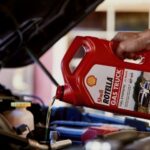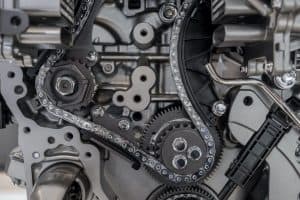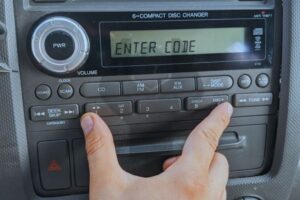Car gas leaks can be dangerous; therefore, you need to address them right away. On this page, we’ll go through all of the things you need to know about gas leaks in cars—what are the causes and how to fix them?
Gas leaks can be deadly. The gas that collects underneath your car could result in a fire. Unfortunately, it’s sometimes difficult to detect gas leaks because they can happen anywhere in your car’s fuel system. At times, the source of the leak is the vent hose that’s connected to your car’s fuel tank.
Read on to get a more thorough discussion of gas leaks in cars.
3 Common Symptoms of a Car Gas Leak
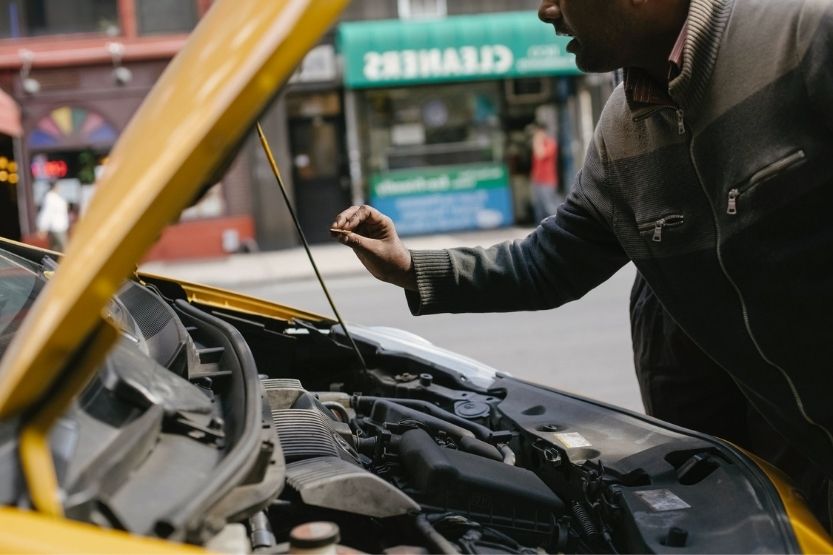
The fuel tanks of most cars are strong enough to withstand varying temperatures, pressures, and most road elements. But like other parts of a car, it’s going to wear out over time. Once that happens, it could spring a leak.
If you think your car’s fuel tank is the problem, the best person to consult is your mechanic. You should also look for these signs of a car gas leak:
1. Slight Sweet Smell
Gasoline has a naturally sweet smell. According to the United States Agency for Toxic Substances and Disease Registry (ATSDR), benzene is the substance responsible for its distinct smell, which helps boost your car’s performance and gas mileage.
You may sometimes catch a whiff of gasoline when you’re driving or when your car’s idling. However, the smell should immediately disperse as it evaporates or ignites in the engine. If the smell lingers or becomes stronger, pay closer attention to other symptoms of a leaking fuel tank.
2. A Big Drop in the Fuel Gauge
Checking your fuel gauge levels is perhaps one of the simplest ways to know if you have a leaking problem. However, it’s not a foolproof method. Your car needs to lose large amounts of fuel for you to be able to tell that there’s a leak.
First, you need to note where the needle is pointing on the fuel gauge while your car is parked (with the engine off). Then, start your car again. The fuel level on the gauge should be the same as when your car wasn’t running. But if there’s a leak, it could show that you’re running low on fuel.
Other Things to Watch out For
- The level of gasoline in your tank slightly or significantly falls even when your car hasn’t used that respective amount of gasoline.
- The gauge shows that you’re still running low on gasoline after refilling your tank.
- You keep refilling your gas tank to move your car the same distance and speed.
3. Puddle Under Your Car
Get your car’s user manual to check the exact location of its fuel tank (if you still don’t know yet). Once you know that, pay attention to the spot directly underneath the fuel tank to look for wet spots.
If you parked your car on a paved or gravel road for a long period, you’d usually notice a small puddle of gasoline that’s brown or orange in color. If you parked it on or near grass—which you should avoid—the fuel leak could cause the grass to discolor and die fast.
How to Get Gas Smell Off Hands
6 Possible Causes for Gas Leaks in Your Car
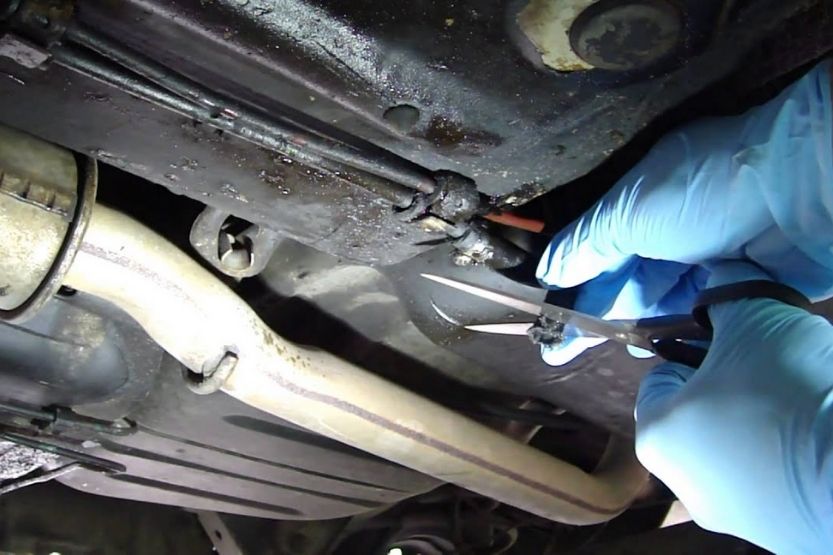
There are many reasons why gas leaks from your car, ranging from minor to major issues, which you need to fix immediately. To give you some ideas, below are a few common reasons for gas leaks in cars:
1. Worn Out Fuel Tank
During the entire service life of your car, you might need to replace some major parts of the fuel injection system, like the fuel filter and fuel supply pump. The fuel tank rarely needs replacement—that is, if you take good care of it.
However, your fuel tank may rot and fail over time because of moisture or natural wear and tear. It can also develop leaks because of road debris, such as road salt. If that happens, you might need to replace the entire tank.
So, how long do fuel tanks usually last? If it’s made of steel or aluminum, it will last for a minimum of ten years. A new fuel tank could cost between $1,094 and $1,160, excluding the cost of labor.
2. Leaking Fuel Lines and Hoses
The function of the fuel lines is to deliver fuel from the fuel tank to the engine to make your car actually run. These lines can normally handle a lot of pressure and last anywhere from 50,000 to 75,000 miles. But oftentimes, leaks develop in such areas, especially the hoses.
Leaks happen in the lines because of different reasons. It could be due to a damaged hose, which frequently results from improperly sealed mounting points. Other reasons could be rust and wear. That’s why it’s important to have your fuel lines, particularly the fuel vent hose, regularly checked.
Unfortunately, once a fuel line leaks, it can’t be repaired. Thus, you need to replace it.
Signs That You Need to Replace Your Fuel Lines
Here are three signs you need to watch out for to know if your fuel lines need replacing:
- A noticeable gas odor will come from your car.
- Your car may turn on but it will immediately stall because of low fuel level.
- Your car will not turn on because there’s not enough fuel in the combustion chamber.
3. Using Fuel Additives
Many of the fuel additives on the market are harmless. In fact, they can help plug small engine leaks (at least temporarily) and maximize your car’s fuel efficiency.
While they’re generally safe, some additives can damage the fuel supply system of your car, one of which is acetone. Apparently, some people add 1 to 3 ounces of acetone per 10 gallons of gasoline to boost their car’s mileage by as much as 25%.
Using acetone to increase gas mileage doesn’t work at all. Worse, this corrosive substance could damage your engine and other major components of your fuel supply system (e.g., gaskets and O-rings). This would eventually cause leaks. That’s why car manufacturers strongly warn against the use of acetone in your fuel system.
4. Damaged Gas Cap
The gas cap isn’t just for preventing fuel from coming out from the tank. It also serves other essential functions, such as:
- Maintaining the correct pressure inside the fuel tank, and
- Preventing gas fumes from escaping from the tank.
In most cases, a cracked, damaged, or missing gas cap is the reason for the leaking and smell of gas in your car. So, you might want to consider buying a new one to ensure your car’s fuel supply system works as intended.
5. Damaged O-Ring or Rubber Seal
Leaking doesn’t always occur in the fuel injector. But if it does occur there, the most likely culprit is defective O-rings. Because these gaskets are exposed to the engine’s heat all the time, they could become hard and brittle. This prevents the fuel injector from staying tight against the engine to prevent leaking.
To determine if this is the problem, inspect the area around the oil filler cap. If you notice any debris or oil residue on the valve cover, check the O-ring for any signs of damage. If it’s cracked or brittle, get your mechanic to replace it and other damaged components.
6. Excessive Vibration
It’s not unusual for your car to vibrate when you’re driving because of its various moving parts, such as:
- Crankshaft,
- Engine,
- Suspension, and
- Transmission gears slightly.
But if the vibration is excessive, it could damage your fuel tank and put a lot of stress on your car’s structural parts, causing them to fail after many cycles.
Again, what causes a gas leak? Gas leaks usually result from a problematic vent hose connected to your car’s fuel tank. When not detected, it can cause a fire.
What Should You Do to Fix Fuel Leak in Your Car?
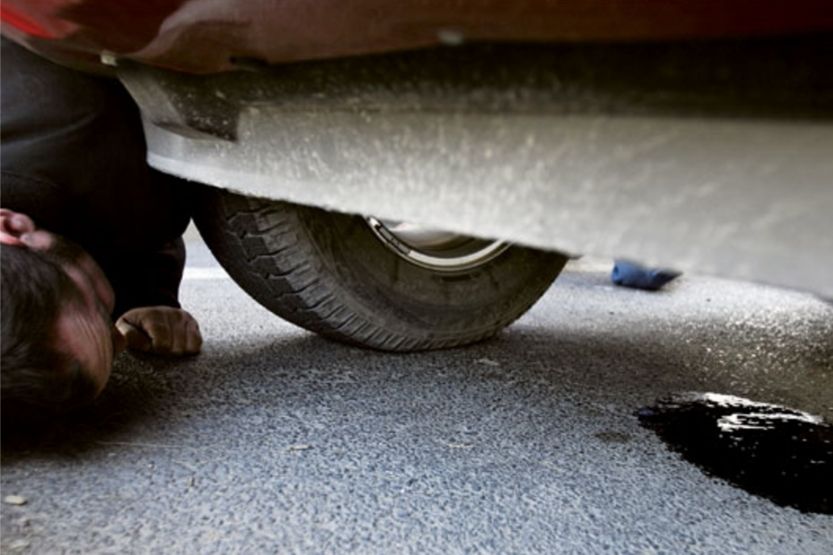
The good news is most causes of car fuel leaks are repairable—if the person doing the fixing knows what he’s or she’s doing, that is. Here are some of the things you can do if you think there’s a fuel leak in your car:
1. Don’t Drive Your Car
Your safety should always come first. Leaking fuel is dangerous. A simple spark could lead to a fire or an explosion. Furthermore, you won’t be able to drive that far anyway because your car is dripping gas.
2. Check the Color of the Leaking Fluid
Your next step is to determine if the leaked fluid is indeed coming from your car. If you parked in a public space, you need to rule out the possibility that another vehicle is responsible for the spot of fuel on the pavement.
Once you’ve located the source, it’s time to determine the color of the leaked fluid. Below the area of your car where there’s leaking, place an aluminum foil, cardboard, newspaper, or any material that lets you see the color of the fluid.
Colors of Some of the Most Common Automotive Fluids
Below are the colors of some common automotive fluids:
- Clear: No need to worry about this because it’s most likely water. It could be from your car’s air conditioner or windshield washing system.
- Red: A red or pink fluid might be transmission fluid, which is an odorless fluid that originates from the front or near the middle part of a car.
- Black: A black or brown fluid might mean your brake fluid is leaking. If it’s a brand-new engine oil, it could be slightly amber in color, with the consistency similar to that of olive oil.
- Green or orange: Antifreeze, also called as engine coolant, has a healthy green (if it contains ethylene glycol) or orange (for DEX-COOL®) color. It could also turn into a rusty color if it’s unable to control the buildup of rust and scale.
- Brown or red: Another fluid that could have a brownish or reddish color is power steering fluid.
3. Getting It Fixed
Should you do it yourself or hire a professional mechanic? Depending on the affected components, you could probably try to cover a small hole by yourself with a patch kit for either metal or plastic.
However, some leaks might be too complicated for most car owners to diagnose and fix themselves. In some cases, the best solution would be replacing a defective car component, which could require professional help. Sometimes, you might even need a professional to weld a fuel tank after you have it removed—if it’s the source of the leak.
Doing it yourself can save you a lot of money, but only if you know what you’re doing. Hiring a professional mechanic is a good idea because of the complexity of modern car components, diagnostic tests, and repair tools. Not to mention, a fuel leak is one of the most dangerous things you could handle on any vehicle.
Factors That Affect the Cost of Gas Leak Repair
How much does it cost to repair gas leaks in the car? The amount you need to pay for fixing this issue depends on many factors, including:
- The source of the leak
- The extent of the damage
- Car mechanic labor charge (The state where your mechanic or repair shop is based could also affect the service charge.)
- The condition of the damaged car part (Is it brittle, cracked, rusty, and/or missing certain components?)
- Parts that need replacement (if necessary)
Most independently-owned repair shops might charge between $70 and $90 per hour for car repair, while most dealerships might charge $80 and $125 per hour.
For repairing a leaking fuel line, the average cost is around $60 to $120. Replacing a damaged fuel tank would cost more than $1,094 (excluding labor costs). If you need to replace your fuel hose, the average cost is $120-$500, depending on the brand and model.
Conclusion – Gas Leaks in Car [Causes and How to Fix]
Gas leaks can happen anywhere in your car’s fuel supply system, such as the fuel tank, fuel tank vent hose, Evaporative Emission Control (EVAP) canisters, fuel injectors, and gas cap. Since this problem can be dangerous, you need to have it repaired as soon as possible to protect yourself and your passengers from fires or explosions.
Remember: Before you put money into replacements, it’s important to consider if it’s worth it seriously. Most causes of gas leaks in cars can be repaired with minimal effort and cost.
Related reading:

![Is Shell Gas Good for Your Vehicle? [Shell Gas Review] is shell gas good for your vehicle](https://roadsumo.com/wp-content/uploads/2022/03/is-Shell-gas-good-for-your-vehicle-150x150.jpg)


